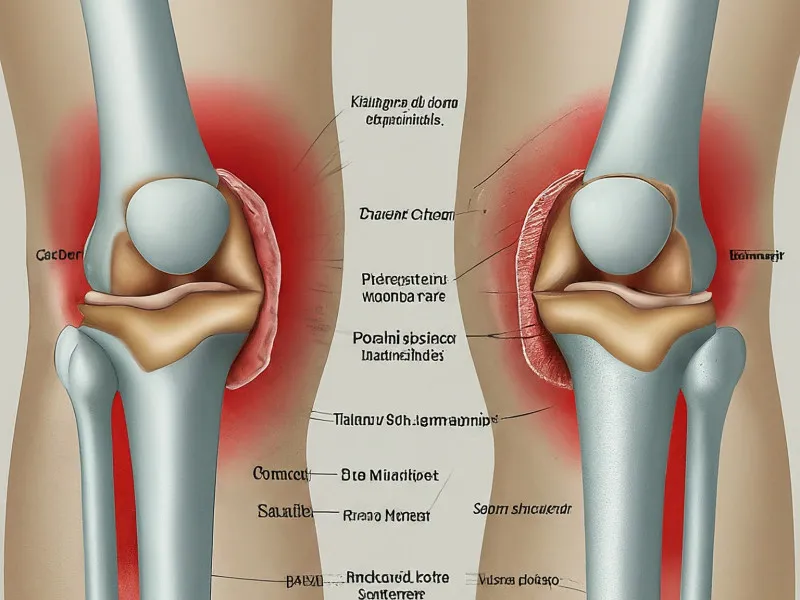
Introduction to Knee Cartilage Injuries
A knee cartilage injury can be a troubling and painful experience that affects your daily activities. The cartilage in the knee acts as a cushion and enables smooth movement of the joint. Common causes of knee cartilage injuries include trauma from sports, falls, or accidents. Sometimes, they can also result from repetitive strain or age-related wear and tear. Initial symptoms typically include knee pain, swelling, and difficulty in moving the knee. Diagnosis usually involves a physical examination and imaging tests like MRI or X-ray.
Understanding Knee Cartilage Injuries
Injuries to knee cartilage occur when the cartilage that covers the ends of the bones in the knee joint is damaged. This damage can range from small tears to significant areas of cartilage loss. A meniscus tear is a common type of knee cartilage injury where the crescent-shaped cartilage in the knee tears. It’s crucial to understand that these injuries can severely impact your mobility and quality of life, often accompanied by pain on the inner side of the knee and difficulty in bending and straightening the knee.
Side Effects and Complications
Knee cartilage injuries can lead to several short-term and long-term side effects. In the short term, you may experience pain, swelling, and limited movement. If left untreated, complications may arise, such as chronic knee pain, persistent swelling, and difficulty in performing daily activities. Over time, untreated injuries can lead to osteoarthritis, a condition characterised by the breakdown of joint cartilage and underlying bone, which can severely impact the quality of life.
Recovery and Rehabilitation
Recovering from a knee cartilage injury can be a gradual process. The typical recovery timeline varies, with minor injuries healing in a few weeks to more severe cases taking several months. rehabilitation usually involves several stages:
- Initial Rest: Reducing weight on the knee to avoid further damage.
- Physical Therapy: Engaging in specific meniscus tear exercises to strengthen the muscles around the knee.
- Gradual Return to Activity: Slowly reintroducing regular activities while continuously monitoring progress.
Barriers to recovery can include not adhering strictly to rehabilitation guidelines, overexertion, and returning to activities too soon. Overcoming these barriers involves following medical advice, being patient, and regularly attending physiotherapy sessions.
Additional Patient Information
Early intervention is critical in treating knee cartilage injuries, as it can prevent further complications and expedite recovery. Here are some tips to help prevent future issues:
- Maintain a healthy weight to reduce stress on the knees.
- Engage in low-impact exercises to strengthen the muscles around the joint.
- Avoid repetitive strain on the knees.
Seek medical advice if you experience persistent pain, swelling, or difficulty in moving the knee, as these could be signs of complications that require professional attention.
Frequently Asked Questions (FAQs)
- Q1: What should I do immediately after a knee cartilage injury?
A1: Rest the knee, apply ice, compress the area with a bandage, and elevate the knee to reduce swelling. Seek medical advice promptly. - Q2: How long does it take to recover from a knee cartilage injury?
A2: Recovery time can vary from a few weeks to several months, depending on the severity of the injury and adherence to a rehabilitation programme. - Q3: Can I prevent future occurrences of knee cartilage injuries?
A3: Yes, maintaining a healthy weight, engaging in low-impact exercises, and avoiding repetitive strain can help prevent future occurrences. - Q4: What are the signs of complications after a knee cartilage injury?
A4: Persistent pain, swelling, and difficulty in moving the knee are signs that you may be experiencing complications and should seek medical advice. - Q5: How effective is physical therapy for recovery from a knee cartilage injury?
A5: Physical therapy is often highly effective, helping to strengthen the muscles around the knee and improve mobility. - Q6: When should I consider surgery for a knee cartilage injury?
A6: Surgery should be considered if conservative treatments such as physical therapy and medications fail to alleviate symptoms and improve knee function.
In conclusion, understanding knee cartilage injuries, their impacts, and effective recovery strategies can facilitate better management and quicker recovery. Early intervention and adherence to rehabilitation guidelines are key to preventing complications and ensuring a successful recovery.
